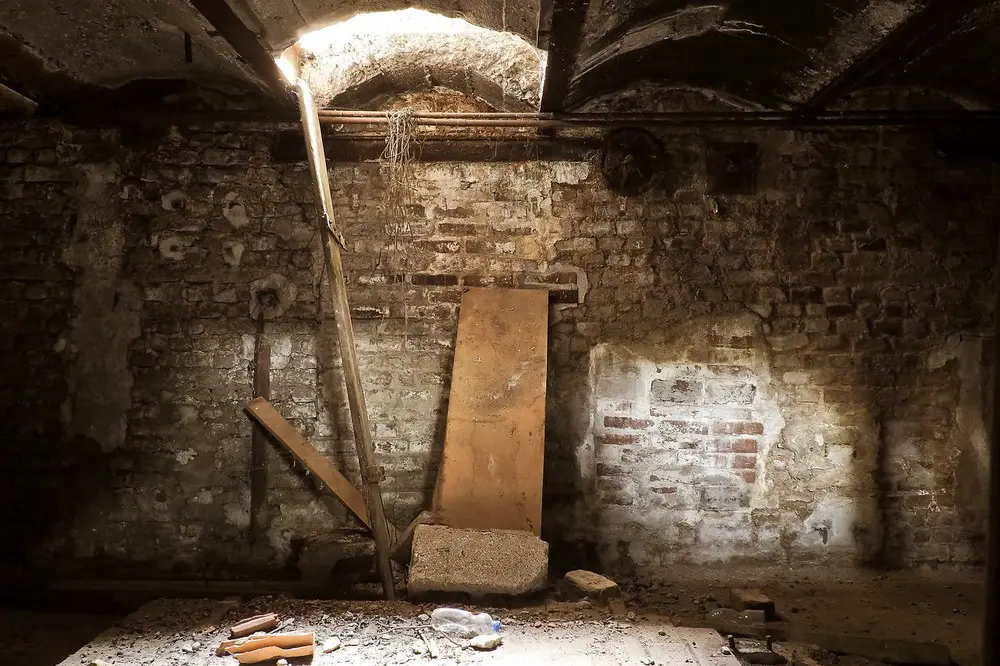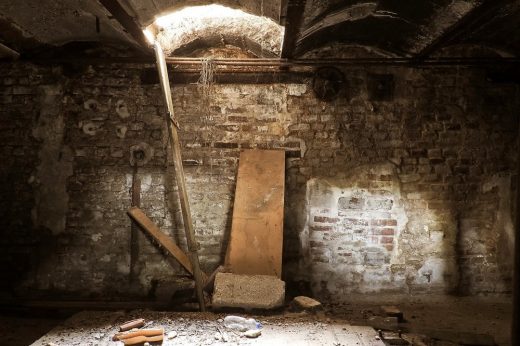How to look after your basement, 4 essentials, Home foundation strengthening advice, Dry property structural tips
How to Look After Your Basement: 4 Essentials
1 Aug 2023
Believe it or not, many homeowners are blissfully unaware of the hidden dangers that lurk beneath their feet (aka their basements).
Therefore, in today’s article, we will shed some light on the importance of taking care of this often-ignored space. We’ll also talk about several essential maintenance steps and techniques needed to keep your basement in top shape.
So, if you want to uncover the secrets of a healthy and functional basement, make sure to read until the end!
1. Waterproof Your Basement
If water infiltrates your basement, it can lead to various problems, such as mold growth, structural issues, and a compromised foundation. Mold, in particular, can pose health risks to you and your family.
Therefore, to maintain a dry and structurally sound basement, it’s important to prevent water infiltration. The good news is that you can easily achieve this by waterproofing your basement.
Depending on your needs, you can use exterior waterproofing techniques (to prevent water from entering the basement from the outside) or interior techniques to prevent infiltrations.
For the exterior, you may have to excavate around the foundation walls to apply a waterproof membrane or coating to the walls. You can also install a drainage system, like French drains or gravel trenches, to redirect water away from the foundation.
For the interior, you can apply waterproof sealants or coatings to the interior walls and floors. And, if you’re still having issues, you may want to install a sump pump system that can help manage excess water buildup.
Even though waterproofing is essential if you want your basement environment to stay dry and friendly, many misleading theories try to convince homeowners otherwise. This is why we recommend reading this guide by Dry Tech on the most common myths of waterproofing.
2. Improve the Insulation
Insulating your basement offers various benefits beyond just keeping the space comfortable. One of the key benefits is improved energy efficiency. By insulating your basement, you can reduce heat loss during cold seasons and minimize heat gain during hot seasons, resulting in lower energy bills.
Insulation also helps regulate temperature and humidity levels in your basement, creating a more comfortable living environment. It also acts as a sound barrier, reducing noise transfer between different parts of the house.
There are several types of insulation you can use for your basement. Still, it’s important to consider factors such as the moisture level in the space and any specific requirements for fire resistance. So if you’re not familiar with these materials and installation techniques, it’s best to consult with a professional to determine the most suitable insulation option for your basement.
3. Strengthen the Structure
Strengthening the structure of your basement is crucial for maintaining a safe and stable living environment. The main benefits are structural stability, resistance to foundation cracks, and increased load-bearing capacity, which can prevent the potential settling or shifting of the basement walls or floors.
By reinforcing the foundation, you can ensure your home remains secure and resistant to structural damage. One commonly used technique for strengthening basements is underpinning. This method involves reinforcing the existing foundation by extending its depth or adding additional support.
Other strengthening techniques involve installing shear walls or bracing systems, which provide lateral support to prevent horizontal movement during seismic events or soil pressure against the foundation walls.
These techniques not only enhance the structural integrity of your basement but also provide peace of mind knowing that your home is better equipped to withstand external pressures and natural disasters.
4. Check the Ventilation and Air Circulation
Without adequate ventilation, the air in your basement can become stagnant, leading to a buildup of odors, moisture, and potentially harmful pollutants. Proper ventilation helps remove excess moisture from the air, reducing the risk of mold growth and musty odors.
It also helps prevent the accumulation of harmful gases like radon that can seep into basements from the ground.
Here are a few ways to ensure your basement is properly ventilated:
Install Vents or Exhaust Fans
These systems help draw fresh air into the basement while expelling stagnant or polluted air outside. Vents or exhaust fans can be installed on exterior walls or near windows to facilitate proper airflow.
Make sure they are properly sized and positioned for maximum effectiveness.
Use Dehumidifiers
Basements are prone to high humidity levels due to their low position in relation to groundwater and limited natural airflow.
Dehumidifiers help control humidity by extracting excess moisture from the air, effectively reducing the risk of mold growth and improving overall air quality. Choose a dehumidifier with a capacity suitable for your basement size.
In addition to installing vents or exhaust fans and using dehumidifiers, there are other steps you can take to improve air circulation in your basement:
- Open windows and doors: When weather permits, opening windows and doors can allow for natural airflow and help exchange stale air with fresh outdoor air.
- Use fans: Place portable fans strategically around the basement to promote airflow. Position them near windows or doors to draw in fresh air or create cross-ventilation by placing them at opposite ends of the space. Ceiling fans can also be installed to enhance air circulation.
- Clear obstructions: Ensure that furniture, storage items, or any other objects in the basement are not blocking airflow. Clearing obstructions allows air to move freely throughout the space.
Wrap Up
Now that you know how to care for your basement and the danger of ignoring this space in your home, it’s time to take action.
Activities like waterproofing, insulation, ventilation, structure reinforcement, and ventilation are essentials for creating a safe and comfortable space in your basement.
Comments on this How to Look After Your Basement: 4 Essentials article are welcome.
Building Basements
Home Basement Articles
Basement Remodelling – Luxury or Necessity
Top 5 basement conversion ideas to add value to a home
Basement waterproofing Posts
Thinking of Hiring A Basement Waterproofing Contractor
How to make your basement waterproof tips

From damp to dapper: reclaiming the basement
Building Articles
Comments / photos for the How to Look After Your Basement: 4 Essentials page welcome






